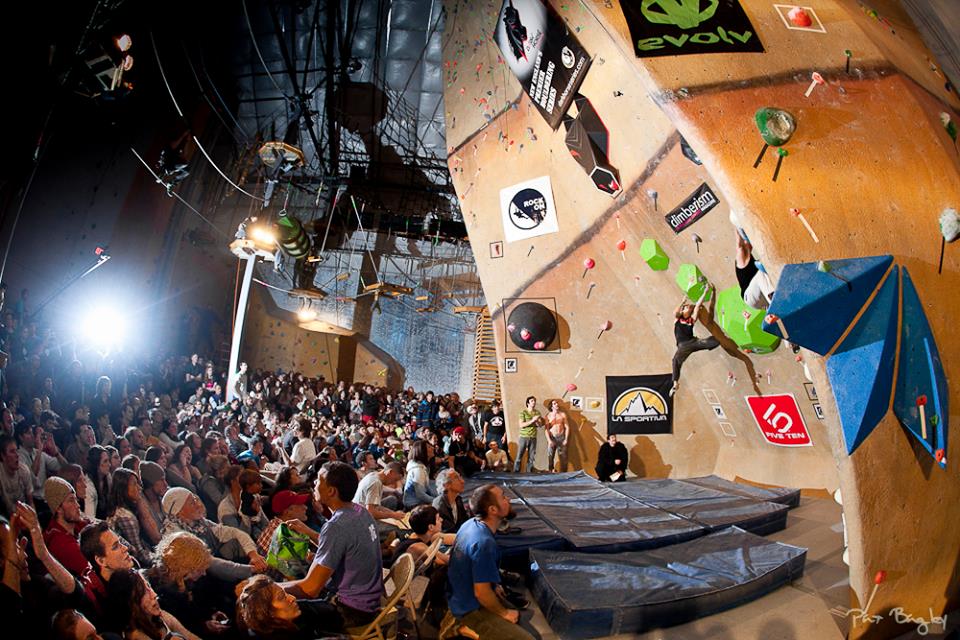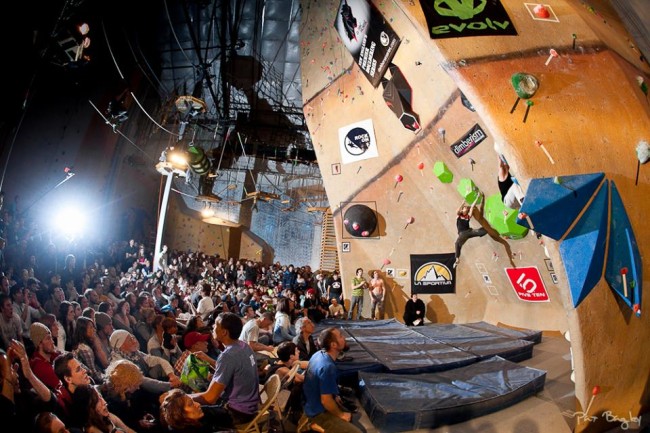
By Joseph Robinson
Parking lots brimming. Lights flashing. Microphones roaring. Beer flowing. Kids crushing. Alex Puccio dynoing. Hundreds of jacked dirt-bags, gym rats and office bats screaming their chalk bags off for one thing. Competition!
As the number of climbing gyms entering the U.S. market grows at a rate of nearly 10% every year, so do the quantity of potential climbing competition venues. Now, professional climbers from around the world are giving nods to competitions at local gyms, to little competitions doing big things. Climbing Business Journal decided to find out why and contacted climbing gym owners, managers, competition organizers and route setters associated with four of the largest local climbing competitions in America to get the beta.
Short Run
The short story is that some big local competitions are making money (some years) and others are not. The longer story requires some pre-calculus and economic theory. One could model the profit equation of these events in trigonometric terms as a negative sine function:
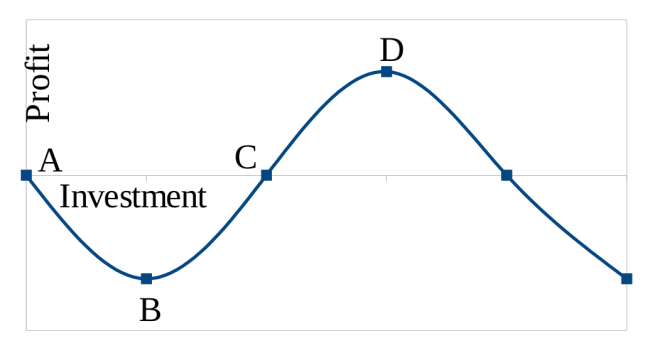
This graph suggests an increase in competition investment at first draws a negative return on gym profits (investment levels between A and B) then a positive return once investment reaches a critical point. At this critical level of investment (B), competition revenues will begin to approach competition expenses. With enough investment (assuming demand exists), revenues should exactly equal expenses (C) and eventually overtake expenses for a profit in the short run. At investment level D, one is investing at the optimal level to maximize profits. Beyond that level, money is just being wasted (I’d like to see you cram a football stadium of spectators, climbers, vendors and staff into a climbing gym). What does this mean for pro-competition hopefuls in layman’s terms? Go big or go home.
“Excitement. That’s what it comes down to. It’s got to be a spectacle,” said Kevin Pickren, the general manager of Central Rock Gym’s Watertown facility, the tenth largest climbing gym in America. Central Rock hosts the Ring of Fire, a New England rope competition series, and The Heist, a popular all-women competition combining both bouldering and sport talents.
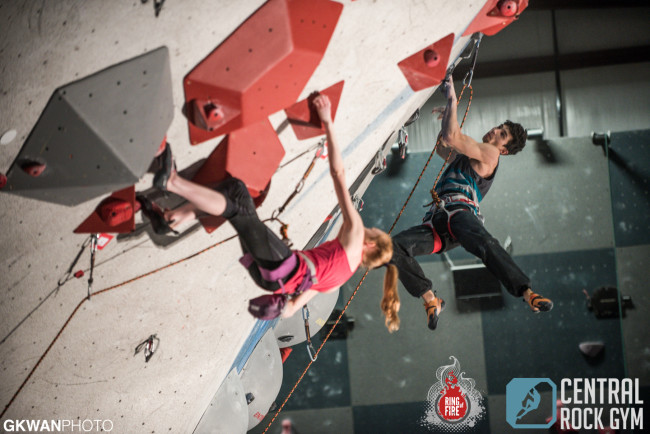
Supply
“Comp climbing has turned into more of a show,” Pickeren said. Why? Two reasons. First, climbing competitions shut down normal gym operations. “We make more money doing normal day-to-day business than doing comps,” Pickren explained. To be a smart business endeavor in the short run, competitions must draw in at least enough revenue to cover the opportunity cost of not operating per usual. Climbing gyms typically hold competitions on weekends, the peak time for public day pass sales and group events. Competitions inevitably nix these sales, so gyms that hold competition series, like Central Rock, forgo sales on multiple weekends. That means competition revenue streams – primarily, aid from sponsors and event registration receipts – must be greater than or equal to income generated from standard operations. Competition holders wishing to play it safe, then, may find themselves facing the sober profits between investment levels A and C if they cannot generate enough interest from sponsors and competition climbers to cover the cost of not being opening for normal business.
Unfortunately, sponsorship depends on past and projected attendance. If you are to increase registration, you’ve got to dish out some dough. Which brings us to point number two: seducing spectators and climbers, especially sponsored climbers, requires money, both to put on that exciting show and to make it worthwhile in the end.
“It’s the prize purse that draws in pros to the comps,” Pickren continued. “The bigger the prize purse, the more likely you are to have a professional group of climbers.” Below is a chart of cash purse sizes at some of the largest local competition series in the country.
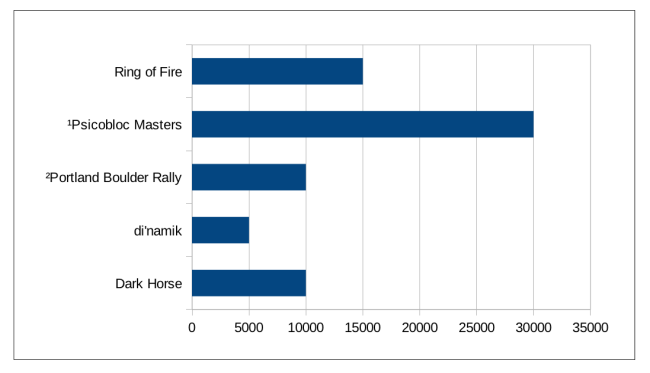
In addition to a cash purse, gyms are also dishing out a great deal of swag. Central Rock Head Setter, Shane Messer estimates the total value of prizes given away at Ring of Fire to be over $24,000. At the Dark Horse, that number approaches $50,000 and the Portland Boulder Rally (PBR) may give away more than $20,000 in a single day.
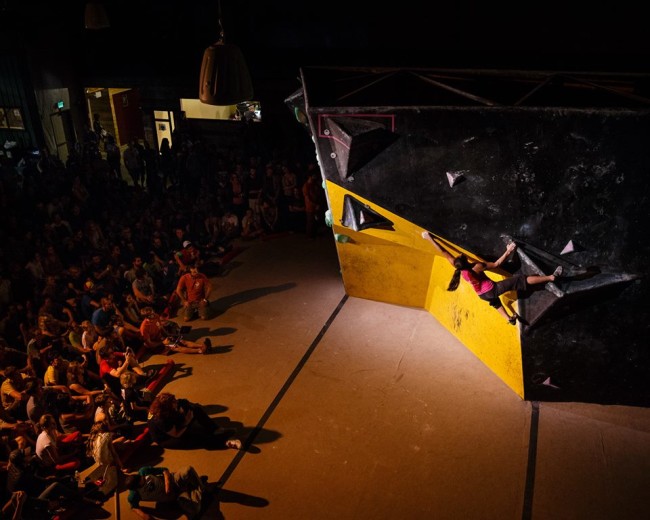
Located in Portland, Oregon and hosted by The Circuit Bouldering Gym, “The Rally” has been reeling in professional crimpers and herds of citizen juggers since its inception in 2011. PBR director Chloe Mandell confirms the importance of a high purse in attracting sponsored climbers, but also the necessity of putting on a good show. “Cash purse certainly helps. I think there is that aspect. It’s difficult to be an athlete in this industry,” said Mandell. “But the biggest thing I keep on hearing is, ‘man, that was just such a fun comp.’” Arguably no better single-day “fun comp” exists than the Portland Boulder Rally.
Mandell estimates that last year nearly two thousand people attended The Rally throughout the day, testing Subaru cars in the parking lot and beer and gear on the festival floor outside. Additionally, roughly 25,000 viewers tuned in online for PBR’s unique live streaming coverage which included commercials and interviews with sponsored competitors. “The desire to be there, to be a part of the energy, that draws in pros,” Mandell said.
PBR’s success suggests greater investment (investment levels somewhere between C and D) can create an electric atmosphere and fat enough purse in the short run to attract sponsor and registration flows which surpass event-related costs, including the cost of not operating per usual.
Demand
However, as with all enterprises, you must consider your market. If a market for your competition does not exist, then you will automatically be investing beyond level D. Even if a market does exist, you’ve got to understand your clientele well enough to apply your investments appropriately.
Such is the case with Di’namik, a three-series competition at The Front Climbing Club in downtown Salt Lake City, Utah. “di’namik was an attempt to throw it back…to the good old days of climbing,” said gym manager Annie Trujillo. According to Trujillo, The Front is a fairly laid-back, community-oriented facility which prides itself on a rich climbing history. While di’namik still boasts a full scene of gear, food, music and superb lighting, Trujillo attempts to avoid the bells-and-whistles of other hip competitions. “We just like to climb, eat, and drink beer,” Trujillo said. “We aren’t distracting anybody with magic tricks.”
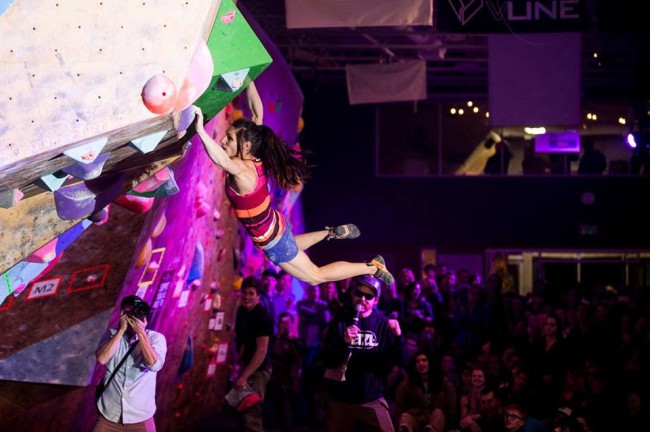
Demand, however, can be a tricky thing to measure. Even if demand could be measured, it’s doubtful most “Ma and Pop” climbing gyms could afford to fund such research. The only way to truly know your market is to enter into it, to invest at the mercy of trial and error. Such is the case with di’namik. “It’s definitely a matter of fails,” Trujillo said. “But once you throw one successful event and are able to improve Facebook impressions and how many people are talking about it on social media afterward, it’s a bit easier to get people for the next event.”
Long Run
Regardless of short term profits, climbing gyms continue to put on expansive, expensive events. Why continue a competition which no longer produces immediate profits? Two reasons.
The first reason is public relations. “There’s a huge marketing component,” said Pat Enright, owner of MetroRock Climbing Centers which hosts Dark Horse, a six-year-old bouldering series also hailing from the northeast. Dark Horse is arguably the largest competition on the east side of the U.S., and its two-year-old sister competition Iron Maiden, an all-women’s competition, is gaining in popularity. Competition series like Dark Horse may still financially benefit the host gym by increasing public exposure which, in the long run, may attract new gym members. For gyms that are breaking even when putting on competitions, that additional exposure comes without cost. “This is the largest marketing campaign we do as an organization. It gets our name out there,” said Enright. “And, essentially, I’m not paying for that.”
The second reason unprofitable competitions may be continued requires us to assume climbing gyms are not all about money. If there was one common theme among everyone contacted for this article, it was the identification of climbing competitions as something more than a mere business venture. When asked what key elements produced a successful climbing competition, nearly everyone responded with an answer relating to one thing. Community.
That’s right, financial matters aside, some of the largest players on the climbing business scene believe climbing competitions are at their best when they develop a deeper climbing community.
Enright, for instance, uses the Dark Horse to generate profits for his local non-profit, Urban Peaks. Founded in 2011, Urban Peaks provides financial support and program assistance to climbing and adventure sport organizations serving disadvantaged, underrepresented youth in Boston and New England. Enright distributes a portion of every registration sale to the organization. “There are some things in this world on which you have to decide your priorities,” Enright said. “You will cut yourself short on some things if your goal is just money. Our goals on this thing are community, P.R., and putting on a good show. Money is secondary.”
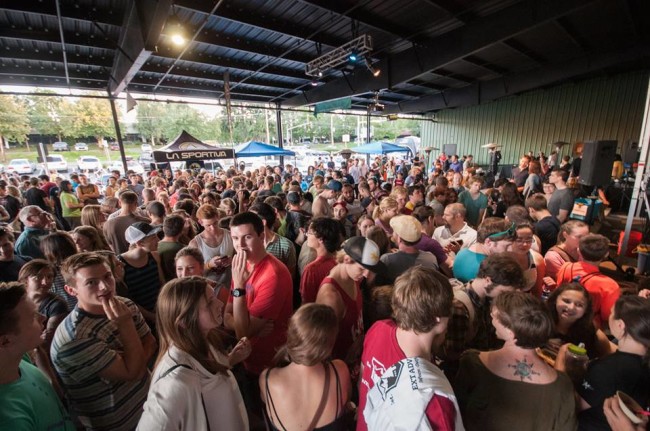
Mandell at the Circuit, agrees with Enright that climbing competitions exist for a higher purpose than profit. “At some point, you have to ask yourself what it is all for,” said Mandell. “For us, it’s to celebrate local communities and to celebrate bouldering.”
After one such celebration, Mandell found herself nearly in tears while reading an email from a Rally attendee. His email described how PBR had inspired him to work out more, eat healthier and, ultimately, how to become a better person.
“I do this for [him],” Mandell explained. “That’s why I do it.”

Joe Robinson has been working in the climbing industry for over a decade and currently manages CBJ editorial. He traveled the world as the IFSC’s community manager during Olympic inclusion and across the U.S. while writing for Alpinist, Climberism, DPM and CBJ. He also worked in local climbing gyms of the Pacific Northwest and West Michigan while advancing economic empowerment, educational equity, youth development and diversity programs of national nonprofit organizations.




